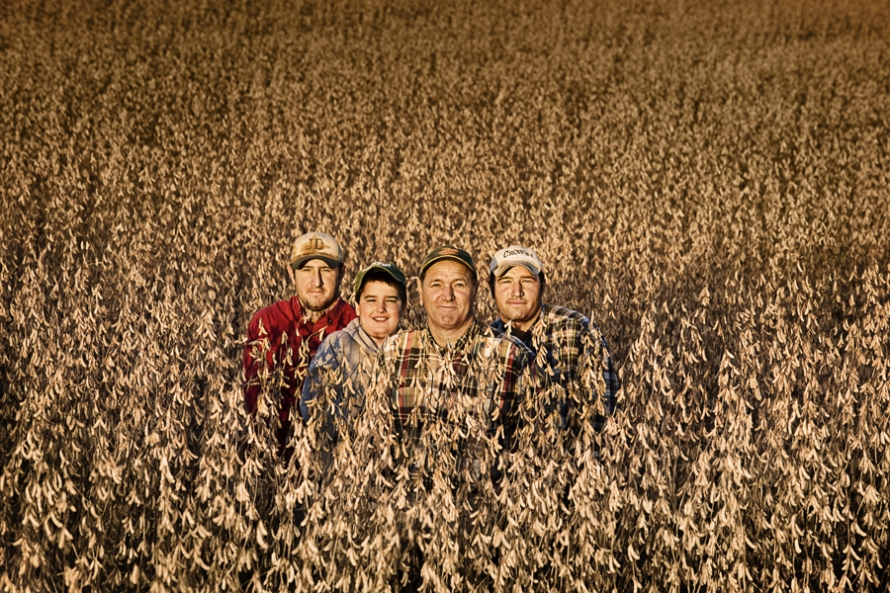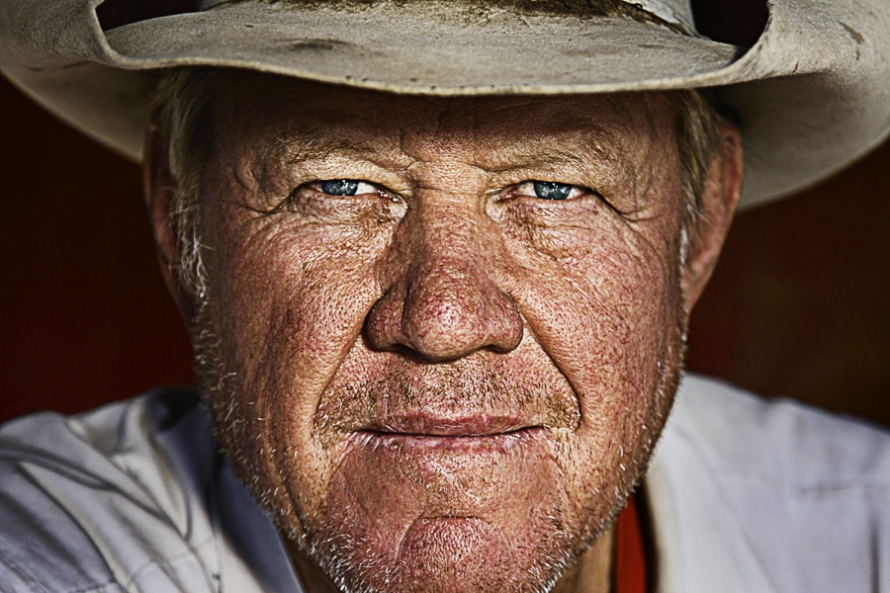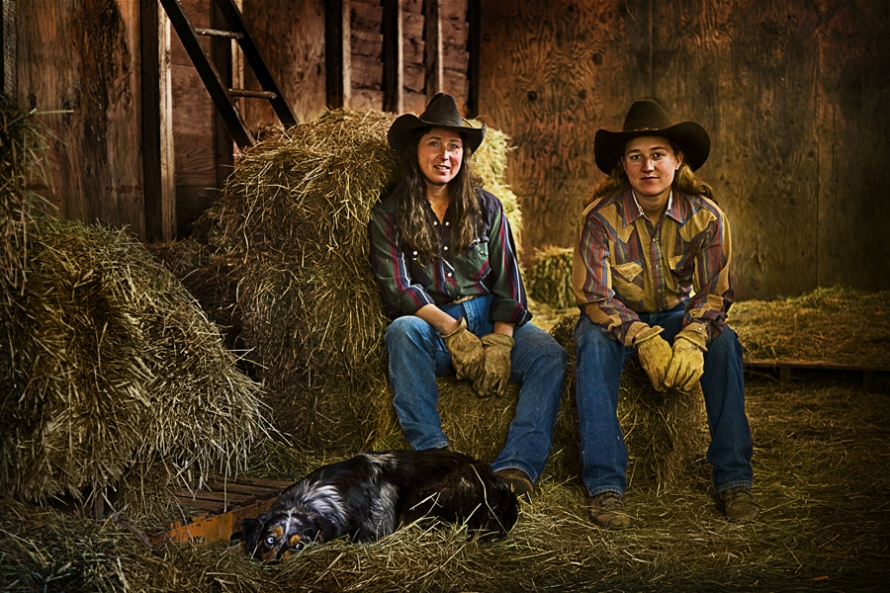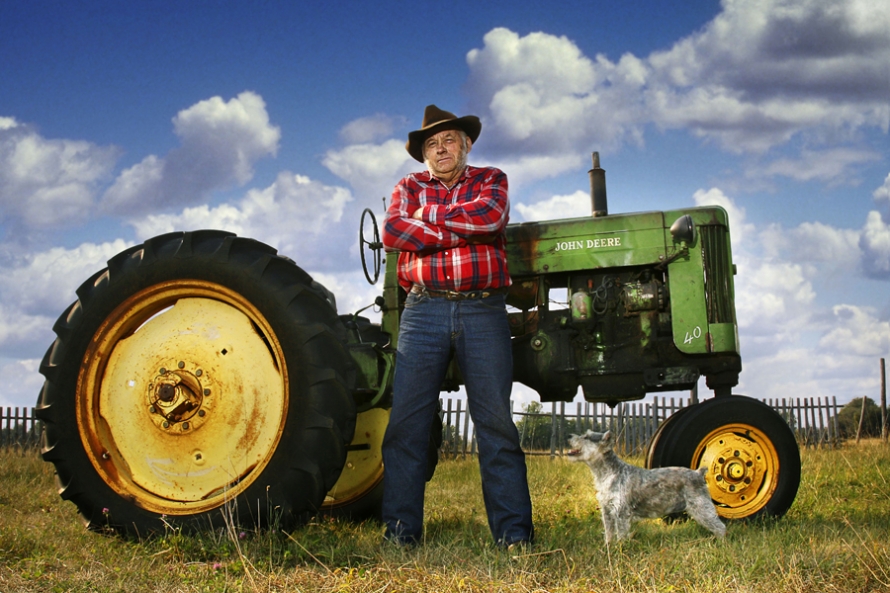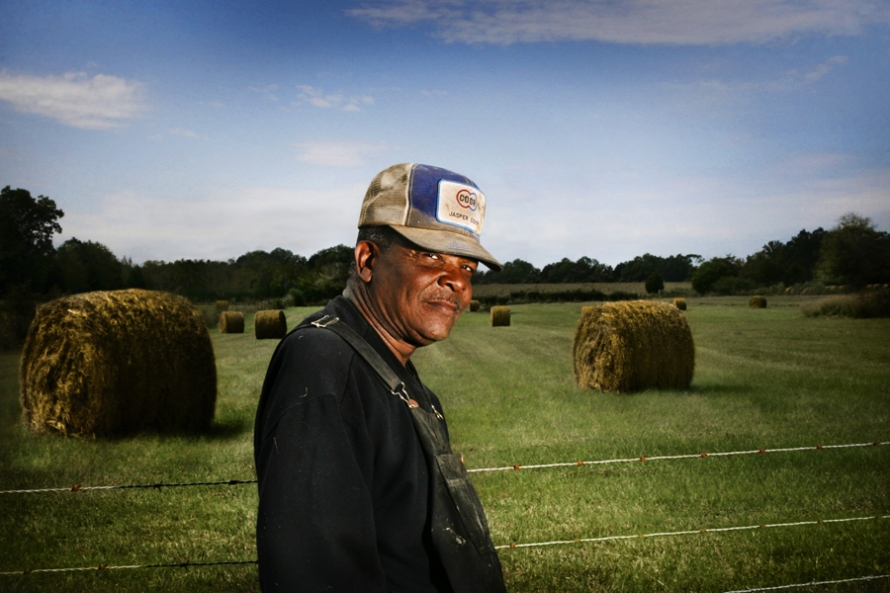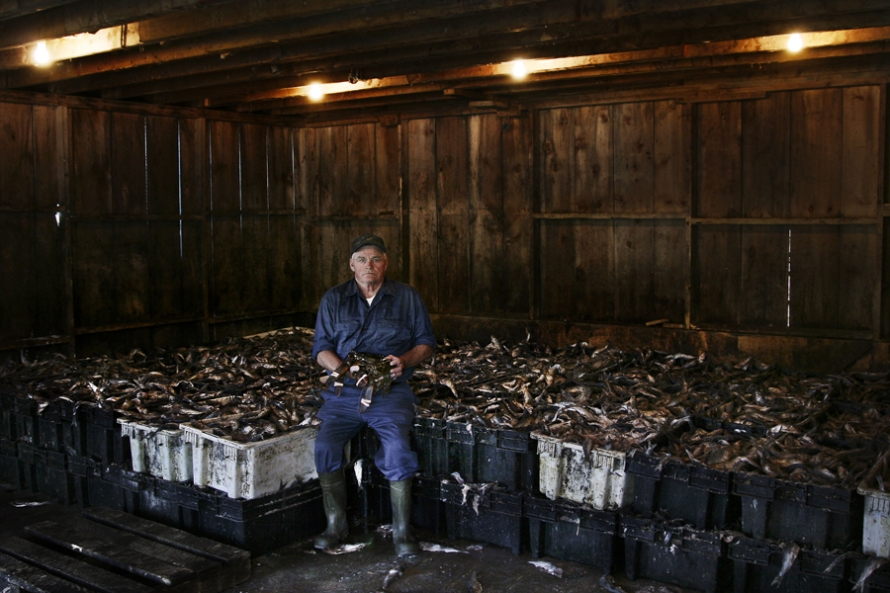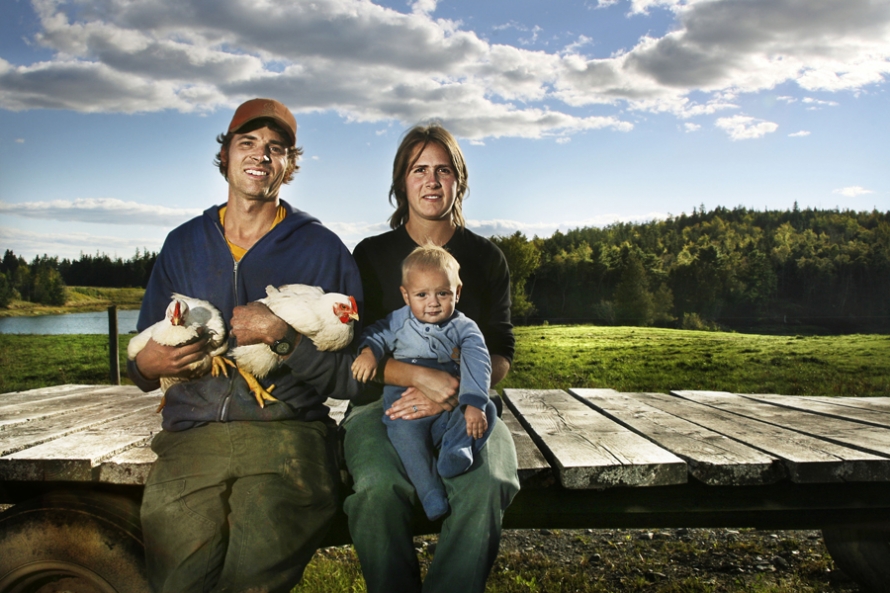Inspired by books and news specials and farmers markets, the foodie movement is driving droves of Americans to figure out exactly where their meals come from, and seek out food that wasn’t conceived by marketers. Independent farmers are the answer—resourceful, adaptive, and in love with what they do—and photographer Paul Mobley spent four years photographing hundreds of them for his new book, edited by Katrina Fried, American Farmer: The Heart of Our Country (Welcome Books).
We sat down (i.e., emailed) with Mobley to learn about his odyssey. All photographs © 2008 Paul Mobley, text © 2008 Katrina Fried.
When and why did this quest begin?
The farmer project began in 2004 while I was spending the summer with my family at our cabin in Northern Michigan. I was in a creative slump at the time, feeling a little burnt out from years of non-stop work as a commercial photographer. One morning, during a daily visit to the nearby diner, I looked over at a familiar group of regulars, local farmers from around the area shooting the breeze over a cup of coffee. And I saw some faces that I just instantly felt I had to photograph. I can’t tell you what made that day any different. It just was. By the end of that afternoon, I had photographed my first farmer. And I already knew, long before I ever saw a contact sheet, that I had taken the best photographs of my life. I made it a point to take those photos my way, and no one else’s. I didn’t analyze it, I just went for it. In retrospect, I think what I responded to was the simple purity of the photographs, both the way they were taken and the men and women I was photographing. The farmers I’ve met these past four years are, without exception, the most humble, authentic, and generous people I’ve ever known. I sought them out, because every time I captured that goodness on film, I became a better person myself. I love the way farmers live. I love the way they treat others. I love the way they respect the earth. The communities they’ve created and live in are as close to a perfect world as I can honestly imagine.
How is the independent American farmer faring these days?
This is an amazing thing to say, but it’s absolutely true: All the farmers I photographed seemed genuinely happy with their life; a remarkable notion given the unprecedented struggles they’re facing today. For many, these are the toughest times they’ve ever had—but you’d never know it. They’re too proud. I know they all worry about the future, about the well-being of the next generation, but another day is a good day to them. They simply take whatever the world gives them, and they give back as much as they possibly can. No rain? We’ll scrape by. Too much rain? We’ll replant. Never once did I get the feeling that they would ever consider doing anything else. They love what they do—and it’s the purest love you can imagine. No matter the conditions that test their mettle, they never give up or doubt their purpose. Retirement is almost unheard of, because for the farmer life is work. I remember a farmer telling me his philosophy on life: “The harder I work the luckier I get.”
There’s a growing movement among non-farming Americans—let’s say the Michael Pollan-ites—to know where our food comes from, and many aren’t pleased when they learn about the corporate food industry. Were your ranchers and farmers seeing the interest?
I know that most are aware of the growing interest, and certainly some of the organic and younger farmers I met are more involved in the evolving politics of food, but I think for the majority of farmers, it has very little impact on the way they farm. They all feel they do the very best they can to produce the highest quality product possible; that’s what they’ve always done and will continue to do. They definitely believe that what they farm is of much higher quality than what the corporate guys churn out. But I think that the public conversation that’s been taking place about the way we should be thinking of and consuming food, is largely seen by the farmers as something that’s happening “out there”—in the cities and among those who’ve never lived or worked on a farm. Most farmers I met are far more concerned with how they’re going to scrape up the money to pay for repairs to a broken tractor before the fall harvest, or outlast the worst drought they’ve ever been through without having to sell off some land—a prospect akin to cutting of a limb for them. In other words, they are struggling, day in and day out, just to survive—anything outside of that is a minor concern in comparison.
Which feels more “American” to you, the wide open spaces or the big cities?
I love the big city, but I miss the wide open spaces. Over the past four years venturing from one farm to the next, I had the ultimate sense of freedom. My worries and anxieties would fly out the car window every time I hit the road. If I didn’t answer the cell phone, who cared? If I got myself lost taking a back road detour, so what? Those small, but monopolizing, city concerns were irrelevant on my rural journeys. Though every homecoming was a very happy reunion with family and friends, I’d soon find myself itching for the next trip into the cornfields, the pastures, the vast horizons. It’s a different way of life out there. Is either one more American? I don’t think so. But in my opinion, you’ll find the very best of America in those wide open spaces.
What comes next?
I’m not sure what comes next. I’m still riding the euphoria of my four-year journey. I’m back to my commercial work, touring for the book, and promoting farming during my breaks. I’ve become very fond of the elderly while working on American Farmer. Maybe a project on growing older would be interesting. A celebration of life and wisdom. In the meantime, I still have over 300 farmers to reminisce about. It feels good.
